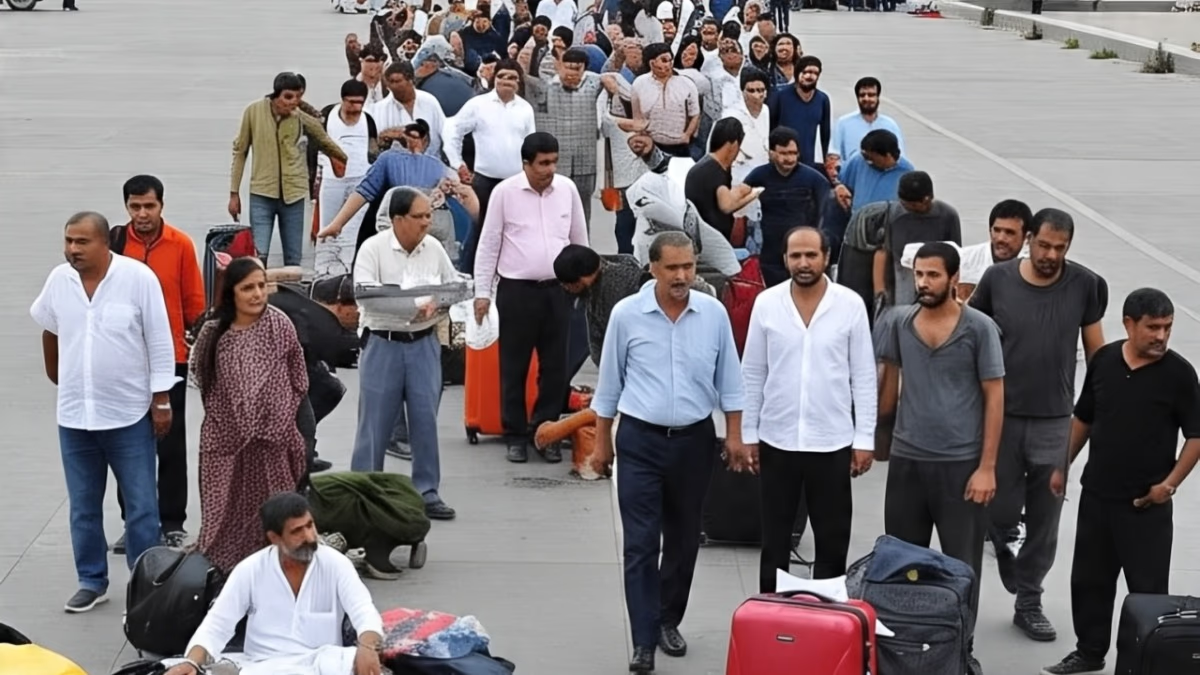In response to Israel's Operation Rising Lion launched on June 13, 2025, Iran altered its military strategy. Iran now claims success in penetrating Israel's robust air defense system, the Iron Dome. The strategy begins with an assault using conventional missiles, followed by the deployment of hypersonic missiles.
Iran's New Strategy: A Two-Phase Attack
Iran has crafted a clever plan against Israel, exploiting the constraints of the Iron Dome. This strategy operates in two distinct phases...
Read more:

Source: aajtak
Phase One: Massive Barrage of Conventional Missiles
Iran launches hundreds of conventional ballistic missiles and drones towards Israel. These include:
Fateh-110:
Range of 300 km, moderate accuracy.
Shahab-3:
Range of 1300 km, older yet available in large quantities.
Qassem Missiles:
Up to a 2000 km range, capable of carrying heavy payloads.
These cost-effective missiles can be produced in large numbers, allowing Iran to deploy them extensively.
Read more:
This intense barrage aims to "saturate" the Iron Dome. The system can intercept only a limited number of missiles simultaneously. When faced with hundreds of incoming missiles, it becomes disoriented, leading to failure in intercepting all. As a result, some missiles managed to reach Israeli cities like Tel Aviv and Haifa, causing minor damages.

Source: aajtak
Phase Two: Lethal Strike with Hypersonic Missiles
After the initial assault occupies the Iron Dome's attention, Iran deploys hypersonic missiles from the rear. These include:
Fateh Hypersonic Missile:
Range of 1400 km, traveling at Mach 5-7 (5-7 times the speed of sound), introduced in 2024 by Iran.
Khorramshahr Missile:
Range of 1450 km, capable of speeds up to Mach 8, recently developed.
Hypersonic missiles are incredibly fast and unpredictable in their trajectory, making them difficult to track. The Iron Dome, designed to intercept short- and medium-range missiles, proves ineffective against these fast, elusive threats.
Read more:
Limitations of the Iron Dome
The Iron Dome is a critical component of Israel's air defense, targeting short-range rockets and missiles (4-70 km). It can engage 10-20 missiles at a time. When Iran launches hundreds simultaneously, the Iron Dome becomes overloaded.

Source: aajtak
Furthermore...
Hypersonic Speed: The Iron Dome's interceptor missiles cannot catch those moving at hypersonic speeds.
Heavy Payloads: Some Iranian missiles carry substantial explosives, challenging the Iron Dome.
Pressure of Numbers: Large missile volumes quickly drain the Iron Dome's batteries, weakening defense.
Impact of Iran's Strategy
This dual strategy presents a new challenge for Israel...
Casualties:
By June 16, 2025, 14 Israelis were killed and numerous buildings damaged by Iranian attacks. A missile struck a residential area in Tel Aviv.
Defense Adjustments:
Israel has activated the David's Sling and Arrow systems alongside the Iron Dome but has yet to find an effective solution against hypersonic missiles.
Read more:
Regional Tensions:
This move by Iran has incited Iran-backed groups in Lebanon, Syria, and Yemen to escalate attacks on Israel.
International Concerns:
The U.S. and European countries have urged both nations to reduce tensions, but no definitive actions have been taken.
Iran’s Weaknesses and Challenges
While Iran’s strategy has been effective, it faces its own challenges...
Dwindling Missile Stock: Continuous assaults are depleting Iran's missile reserves.
Lack of Air Defense: Israel’s F-35 jets and drones have destroyed several Iranian launch sites.
International Pressure: Potential increased sanctions from the UN could impact Iran’s economy significantly.
Israel’s Response
Israel has deemed Iran's attacks "unacceptable" and vowed a retaliatory response. The Israeli Defense Forces (IDF) announced they are developing new technologies to tackle hypersonic missiles. Moreover, the USA has promised Israel the THAAD system and additional military aid.




